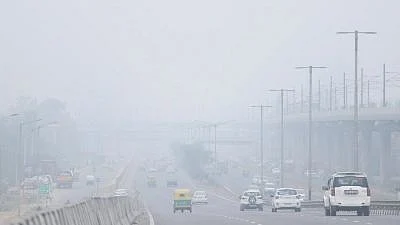With the onset of Diwali celebrations, air quality levels in Delhi were expected to plummet as has been the trend in recent years. But the city surprised all with the air quality being relatively better, even as it was still far beyond WHOs safety standards.
Experts have attributed lower levels of pollution to increased wind speed caused due to warmer temperatures.
As seen on 24th October, the Central Pollution Control Board (CPCB) measured Delhi's air quality at very poor, with an Air Quality Index (AQI) of 312.
Weather Was the Determining Factor for Lower Pollution Levels
“It's good news from Delhi with significantly lower pollution levels. The crackers ban went up in smoke, but it was the combination of factors - late withdrawal of rains leading to subsequent cleaner air, delayed crop burning and better wind conditions that led to this seemingly improved air quality which we haven’t seen in the last 5-6 years."Aarti Khosla, Director, Climate Trends
Stubble burning, which would usually be detrimentally affecting the air quality this time of year, was also delayed due to prolonged rains during September and October. Crop burning is expected to pick up right after Diwali, around 25th October, according to the Indian Agricultural Research Institute.
"The first reason is that the wind direction over the stubble fires, which is northwesterly during this period, changed to southwesterly yesterday. This region doesn’t have fires, and hence the contribution of the farm fires is minimal at 5-8%," said Gufran Beig, Project Director at SAFAR explaining the major reason for the air quality being better compared to the last five years.
Cleanest Diwali Since 2015 Say Experts
According to WHO guidelines, if the level of PM2.5 goes above 35 μg/m3 during a 24-hour period, the air quality is considered unhealthy and a risk to those with existing breathing issues.
If PM2.5 levels exceed 50 μg/m3, the air poses a severe risk to people's health and can cause premature mortality.
The System of Air Quality and Weather Forecasting and Research (SAFAR) found that the PM 10 and PM 2.5 (the two major pollutants) concentration in the city was 257 ug/m3 and 150 ug/m3 around 10 am.
“Around 10 am, the Air Quality Index is hovering between 330 and 360. This is the relatively cleanest Diwali week since 2015."Gufran Beig, Project Director, SAFAR
The CPCB considers an AQI between 301 and 400 to be 'very poor', above 401 is considered 'severe'.
